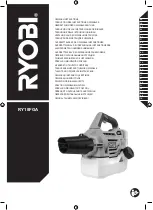
Solo Tele Style DIY Electric Double Neck Guitar Kit
Copyright © 2011 Solo Music Gear. All rights reserved
|
v1.02
3
rounded/curved surfaces. Start with 180 grit sandpaper, continue with 240 and finish with 320, always
moving along the grain only. Before the final sanding, wipe the wood with a damp cloth and let it dry to raise
the wood grain.
STEP 2
–
There are many different ways to apply finish to your guitar. Do a little research to decide which
type of finish you want to use. One good starting point is to review tutorials at the Project Guitar website:
http://www.projectguitar.com/tut/tutorial5.htm
STEP 3 - For any type of spraying finish (lacquer or paint) you will need to mask three areas with masking
tape: neck pocket on the body, neck
’
s fingerboard and truss rod nut. Press the tape tightly to the wood, not
allowing any gaps at the edges, to completely prevent the finish leaking to these areas.
STEP 4 - You will also need to make hangers for both the body and neck (if you want to apply
any spraying finish). Make them from a strong metal wire (wire dress/coat hanger can be used for it).
STEP 5
–
Apply the finish by following the manufacturer instructions. Remember that spraying the finish is not
an easy process as it requires certain skill and experience
–
you might want to practice first on some scrap
wood. Always remember your safety
–
work only in a well ventilated area, away from any open fire and wear
a respirator mask and safety glasses.
STEP 6
–
Final polishing for high gloss finishes can be done manually or using a power drill with a foam
polishing pad. The finishing tools and materials are readily available in many automotive/hardware supplies
stores.
TIP: Consider an oil rubbed finish (sometimes called
“
wipe-on oil finish
”)
as a good and safe alternative.
Tru-Oil® (known as a
“
Gun Stock Finish
”,
based on Linseed Oil) or Waterlox® (Processed Tung Oil) is highly
recommended. Oil finishing takes longer, but it is very safe and easy to apply and a high quality finish can
be achieved, even by a novice.
5. ASSEMBLY
Notes: Before you start assembling the DTCK-1, make sure of a couple things...this is physically a much larger
instrument, and although it seems obvious, make sure your work table is large enough to accommodate the
body/necks with extra space for parts! It is too easy to start and then end up scratching the finish because
you are cramped for space! Also, make sure the table top is covered with a cushion blanket to protect your
finish!
STEP 1
–
Install the Machine Heads on both headstocks. Organize all the parts for the 18 tuners you are
about to install, making sure you have them in the correct order for both headstocks. Insert the post of each
tuner through the hole in the back of the headstock, taking care that the pilot hole on the back of the
headstock lines up with the screw hole on the tuner body. Place the washer over the post and then thread
the hex-head bushing finger tight to the headstock. Now install the screw on the backside and tighten the



























